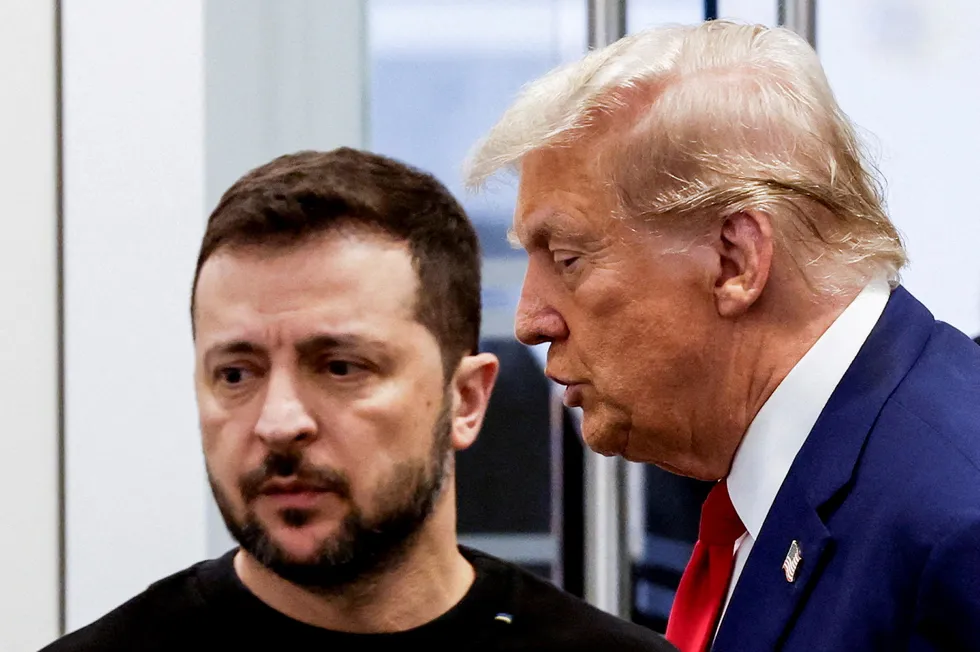
After three years of sparring with Russia, Western oil sanctions appear to have finally landed a punch.
The sanctions are expected to take between 1 million and 2 million barrels per day of Russian oil off the global market, a sizeable portion of the country’s estimated total oil exports of about 4.8 million bpd.
With reports indicating the restrictions are already having an effect in halting the movement of Russian oil to Asia, the latest measures could arguably for the first time deliver a truly significant blow to the Russian oil revenues used to bankroll President Vladimir Putin’s military and political ambitions.
Loopholes in Western sanctions strategy throughout the conflict period have often meant steps designed to punish Moscow for its invasion of Ukraine did not apply the pressure on the Kremlin sufficient for it to reconsider its actions.
And unlike the European Union, which banned imports of Russian oil imports at the same time as the enactment of the price cap regulation, the US administration under Biden repeatedly avoided direct prohibition of Russian oil producers and their oil shipments.
The argument behind that restraint was such a measure could lead to an uncontrolled run-up in the oil price that would hit consumers in the US and elsewhere in the world.
Explaining the timing of this latest round of sanctions, Washington says the measures are being introduced into a different, more secure energy supply environment which limits the upward impact on the oil price.
The current supply outlook looks comfortable. The International Energy Agency (IEA) projects global oil supply may exceed demand by more than 1 million bpd this year.
Pointedly, that’s already taking into account members of the Opec+ alliance sticking to their existing production cuts throughout 2025 (more on those in a moment).
Ukraine has welcomed the further strangling of Russian crude but preventing such large volumes from reaching the global market — as Kyiv has requested from the outset of the conflict — was arguably viable back in 2022.
In October of that year, Opec+ members agreed to cut output by 2 million bpd oil after benchmark prices fell by around a quarter from above $110 per barrel as recession fears trumped conflict-related supply concerns.
That manoeuvre helped underpin prices — which have since traded in a range of between $98 and $70 per barrel — yet failed to restore them to the three figure levels reached following the outbreak of hostilities.
Last year, the IEA estimated Opec+ had spare production capacity of 5.8 million bpd, including 3.3 million bpd in Saudi Arabia, 1 million bpd in the United Arab Emirates, and 600,000 bpd in Iraq.
That suggests that, while bringing side-lined capacity to market may take months, the impact of any full halt to Russian oil exports – which won’t happen as a result of latest US sanctions – could eventually be offset by other suppliers.
While Russia is among the Opec+ signatories, Moscow lacks sufficient leverage over other members to prevent them from increasing their own production to meet any expected shortfall on the global market arising from reduced Russian shipments, particularly with oil prices at current levels.
Had such sanctions been imposed back in 2022, the impact on prices would arguably have provided the support to prices that Opec+ was seeking, while simultaneously becoming a meaningful deterrent to Moscow.
Importantly, the latest measures give US President-elect Donald Trump extra leverage in any talks with Putin and Ukraine’s President Volodymyr Zelensky if he attempts to make good on his vocal campaign promise to broker a ceasefire and peace agreement between Moscow and Kyiv early in his presidency.
That would undoubtedly be a positive thing. One can only regret that stronger and more effective sanctions on Russian oil weren’t passed earlier and before hundreds of thousands of human lives had been lost by two nations in the conflict in Ukraine.
Source: Upstreamonline.com
